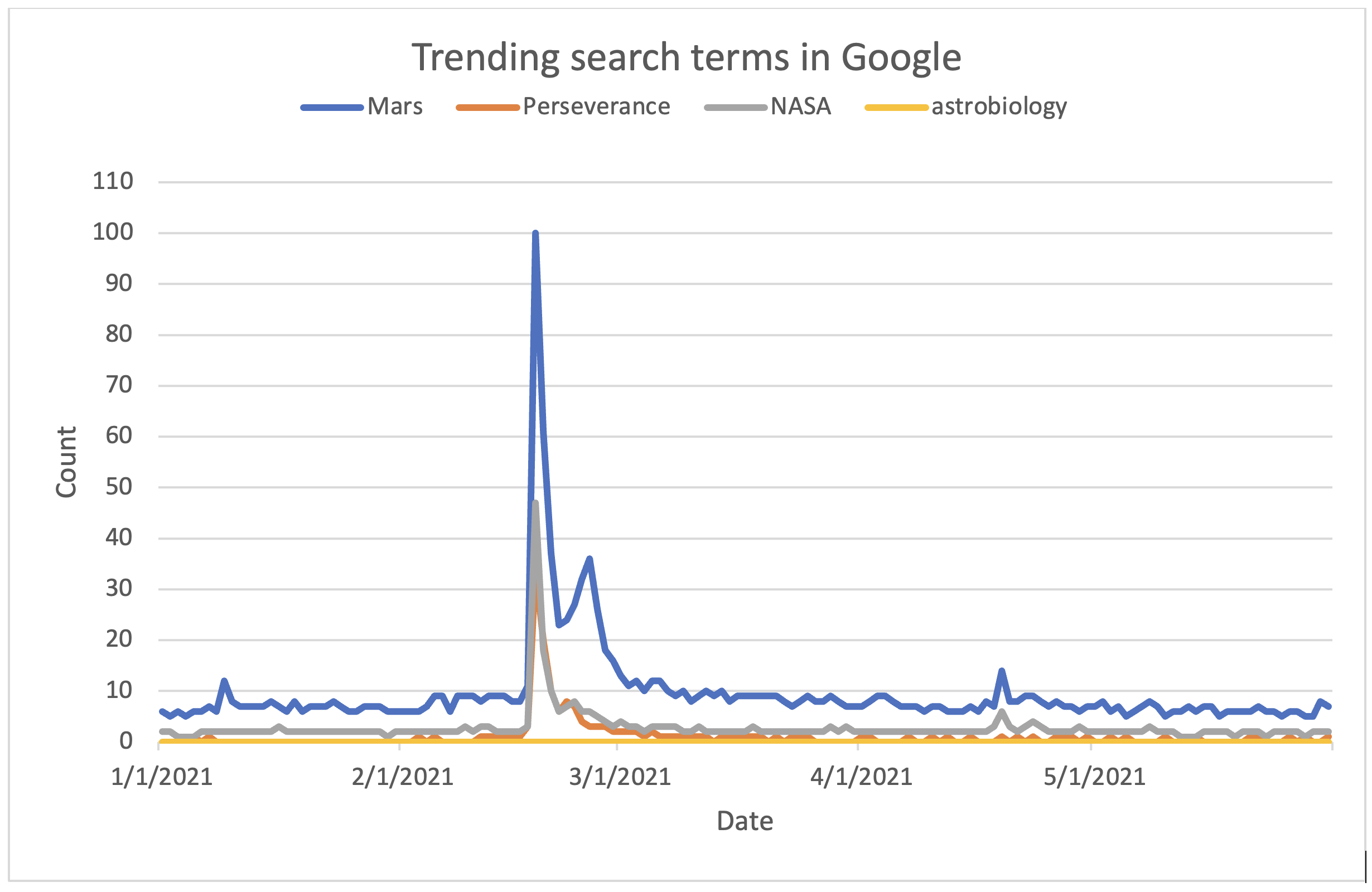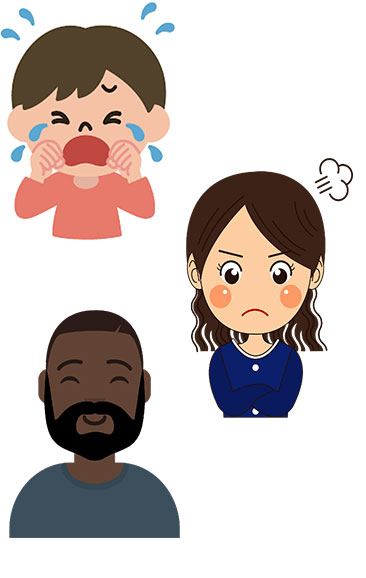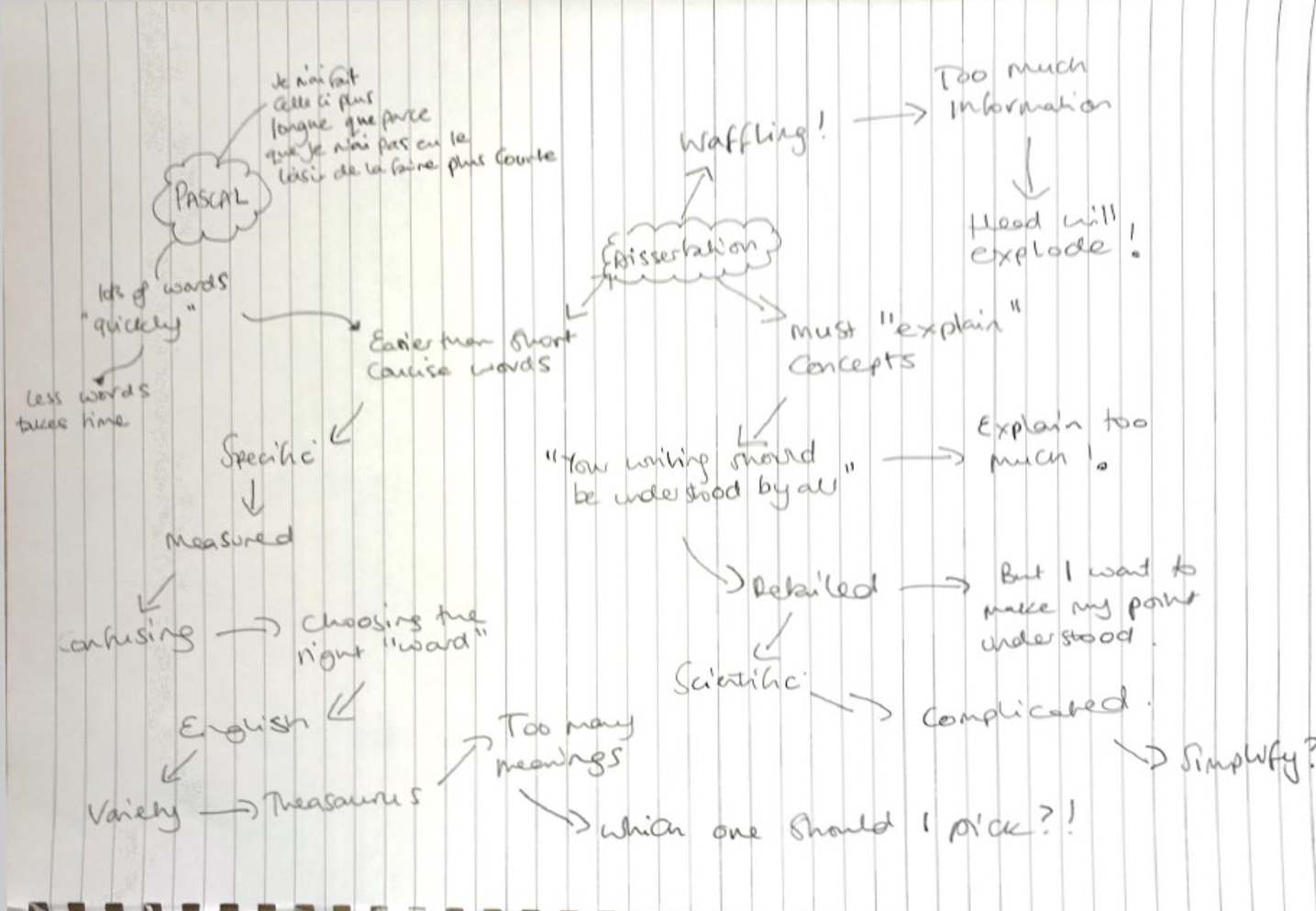The Extended Project Qualification (EPQ) is an opportunity for you to work independently on a topic that really interests you or that you think is important. It is equivalent to an A-level qualification. These articles are designed to help you if you are enrolled on an EPQ.
See previous article in series: Finding and using evidence
Writing up your dissertation.
Being able to communicate well is an essential skill for both university and working life. One of the aims of the EPQ is to help you develop your skills in using different communication tools, so you can communicate what you have found clearly and appropriately for different audiences.
Communication is also a vital part of the research cycle. The progress of research thrives on the exchange, review and discussion of ideas. Writing is one of the ways in which we communicate what we have found out and share it with others.
Sharing the results of your research by writing well and effectively gives your readers the opportunity to learn from the work you have done.
This article offers suggestions and support for developing your skills in writing in the academic style that is needed for your EPQ dissertation.
 Figure 1 The research cycle: communication
Figure 1 The research cycle: communication
Getting organised.
It’s worth considering a few practical points first. The start of writing is a good time to gather your material together and get yourself organised.
You don’t want to find yourself a few days – or hours – from the submission deadline when a computer breakdown or accident means you lose everything you’ve done.
It has happened before, and you don’t want it to happen to you!
Build a routine for backups into your work pattern. For example, when you sit down to write, save a copy (named, for example, Version 1, Version 2 ... Version 25 ...) of the existing document before you make any changes.
And back up your backup. Once a week, make a backup copy of your files (your dissertation, your notes and the resources you have collected) to an external hard drive, memory stick or cloud storage.
Work out how much time you have to write your dissertation, and how much time you want to allocate to each section. (There’ll be more on this shortly under ‘Structuring the dissertation – Start with the structure’.)
Make sure you know – and have written down! – the deadlines for submitting your dissertation, including deadlines for any draft versions your teacher might want to see. Use these to help plan your writing time.
There are many tools to choose from to keep yourself on track. For example, you could create a table with a list of tasks.
| Week | Task | Done |
|---|---|---|
| 1–2 | Write research review | ✔️ |
| 3–4 | Write discussion of results | |
| 5 | Write analysis of evidence | |
| 6 | Write conclusion | |
| 7 | Write introduction and abstract | |
| 8 | Create and check reference list | |
| 9 | Swap drafts with Sam for review Check my draft for spelling and grammar |
|
| 10 | Review Sam’s comments and make final changes Submit draft to Dr Jones |
Or you could make a simple Gantt chart, using a spreadsheet. If you use Microsoft Excel, it has some Gantt chart templates. The advantage of a Gantt chart is that it makes it easier to see how you can overlap some tasks, and you can mark important milestones such as submission deadlines.
 Figure 2 Example of a Gantt chartA screenshot of an Excel spreadsheet used as a Gantt chart. Column A lists the tasks. Columns B to K are numbered as Week 1, Week 2, etc. There is shading in some cells, indicating when the tasks will be undertaken. E.g. Cell C3 is shaded to indicate the research review task will be undertaken in Week 2.
Figure 2 Example of a Gantt chartA screenshot of an Excel spreadsheet used as a Gantt chart. Column A lists the tasks. Columns B to K are numbered as Week 1, Week 2, etc. There is shading in some cells, indicating when the tasks will be undertaken. E.g. Cell C3 is shaded to indicate the research review task will be undertaken in Week 2.
As you have gone through the process of collecting and analysing the evidence you need to answer your research question, you will have gathered records of:
- what you looked for (the search terms you used in your searches)
- where you looked (search engines, websites, etc.)
- what you read / watched / listened to (academic papers, articles, videos, podcasts, etc.)
- the notes you made on your reading, listening and watching
- the data you have gathered.
All these sources contribute to the content of your written dissertation. Hopefully you have good records, but if you got a bit behind, now is the time to sort them out and remind yourself what you did and what you found out.
If you need a reminder of what information you need to keep, look back at Article 2 – Finding and using evidence.
Organising your records and keeping a note of the sources you mention in the text as you write helps you build a comprehensive reference list.
There is more information on how to set out your reference list later in this article (see ‘Structuring the dissertation – Referencing styles’).
Laying out your document in a clear and neat style helps make your readers’ life easier.
For the text, use a classic font such as Arial, Helvetica or Times New Roman. It’s best to avoid quirky fonts such as Comic Sans, or difficult to read fonts such as Lucida handwriting.
For easy reading, the font shouldn’t be too small. 11 or 12 point is a popular choice for the main (or body) text, which is usually black in colour. You can use larger fonts for headings and sub-headings, and perhaps make them bold or a different colour.
Generous margins also make the document easier to read. As a guide, around half the area of the page should be white space; on an A4 page, that means margins of about 2cm all round.
Use the paragraph styling tool. It’s well worth investing some time learning to use paragraph styling in Microsoft Word and Mac Pages; it can really speed up the creation of long documents and help you produce good-looking work.
This tool gives you control over the appearance of the text in your document. For example, you can use it to include automatic numbering for your headings (Word or Pages). This means you don’t have to manually change all the numbering if you insert a new heading or delete one that is no longer useful. You can also use automatic numbering for figure and table captions. Or, if you decide you don’t like the font you have used, you can change it in the paragraph style and it will be changed throughout the document.
Some kinds of evidence – such as numeric data – work well when displayed as graphs, charts and tables.
Readers should be able to make sense of the graph, chart or table without explanation.
Look at Table 2. Is it clear what information the creator wanted to share?
| SUA2 | core | salt precipitates (0-30cm) | muddy |
|---|---|---|---|
| nose (tip of corer) | salt precipitates (30-34) | muddy |
Your answer was probably ‘no’! There’s something about salt and something about muddy conditions, but it’s impossible to say what the writer wanted to show.
A better example can be seen below in Table 3:
| Town or city | Total population in 2020 | Male | Female |
|---|---|---|---|
| London | 8,960,924 | 4,494,611 | 4,466,313 |
| Birmingham | 1,159,888 | 575,432 | 584,456 |
| Liverpool | 589,774 | 292,878 | 296,896 |
| Bristol | 580,199 | 290,344 | 289,855 |
| Manchester | 566,896 | 288,714 | 278,182 |
| Sheffield | 557,039 | 278,024 | 279,015 |
| Leeds | 516,298 | 255,099 | 261,199 |
| Leicester | 415,584 | 208,466 | 207,118 |
| Coventry | 388,793 | 197,892 | 190,901 |
| Bradford | 358,573 | 177,748 | 180,825 |
The columns all have clear headings, so the reader can instantly see what the table is presenting. It has a title (Table 3 Population …), also called a table caption, that describes the table’s contents. It also shows where the data came from, which can help readers judge the trustworthiness of the evidence. These are all critical elements to presenting a good table.
Graphs and charts need
titles too. They should also have axis titles (naming what is plotted on each axis,
with the relevant units) and axis labels (the values plotted).
When it comes to plotting graphs, using different shapes or line styles can help readers distinguish different data points or collections of data on a single graph. You can use contrasting colours, but keep in mind that too many colours can be distracting for the reader. And some readers – for example, people who are colour-blind or have vision problems – might not be able to distinguish between certain colours, so choose carefully.
Look at Figure 3. Does it have all the elements of a good graph? Could anything be improved?
 Figure 3 Comparison of four search terms used on Google in the UK from January to May 2021. The data were obtained from Google Trends.A line graph comparing trends in four search terms used on Google between January and May 2021. The x-axis measures the date, and the axis labels indicate individual days from 1/1/21 to 5/1/21. The y-axis measures search count, from zero to 110. The terms were: ‘Mars’, ‘Perseverance’, ‘NASA’ and ‘astrobiology’. Mars has the highest count rate, relatively constant at between 5 and 10 per day. There is a distinct peak in searches for Mars and Perseverance in mid-February 2021, reaching 110 counts and 47 counts, respectively.
Figure 3 Comparison of four search terms used on Google in the UK from January to May 2021. The data were obtained from Google Trends.A line graph comparing trends in four search terms used on Google between January and May 2021. The x-axis measures the date, and the axis labels indicate individual days from 1/1/21 to 5/1/21. The y-axis measures search count, from zero to 110. The terms were: ‘Mars’, ‘Perseverance’, ‘NASA’ and ‘astrobiology’. Mars has the highest count rate, relatively constant at between 5 and 10 per day. There is a distinct peak in searches for Mars and Perseverance in mid-February 2021, reaching 110 counts and 47 counts, respectively.
This has many of the requirements of a good graph. The
title explains what the graph is about, the axes are labelled and the four
search terms are each given their own colour, with a key to show which is
which.
It could be made better by:
- making the graph larger, so that the four lines are more separate
- choosing different colours – the orange for ‘Perseverance’ and the yellow for ‘astrobiology’ are difficult to distinguish from each other.
Evidently, something interesting must have happened in mid-February to cause this spike in searches – you might remember that on 18 February 2021, the NASA Mars Perseverance Rover mission landed on Mars!
Structuring the dissertation.
Facing a blank page and the prospect of writing 5000 or so words can feel daunting. But you can structure the way you write to help make the task easier.
Starting with the structure will
help you consider how you want the dissertation to flow, and how to
allocate your time and effort.
This example, taken from the Edexcel documentation, gives a suggested word count for the different sections of a ‘research review’ dissertation. All the exam boards publish their requirements, so you should check the requirements for your board and the type of EPQ you are doing.
| Word count | |
|---|---|
| Abstract (summary) | 150 |
| Introduction | 650 |
| Research review | 1500 |
| Discussion / development / analysis | 2300 |
| Conclusion | 400 |
| Bibliography (reference list) | - |
A ‘research review’ dissertation would probably follow something like the structure above. For other kinds of project, check with your teacher or look at the exam board’s requirements. Knowing what structure the exam board is expecting helps you to know where to focus your effort.
In Table 4, you can see that the biggest section of the dissertation is the discussion/development/analysis of the argument, so it would make sense to spend the largest part of your writing time on this section. Look back at the Gantt chart under ‘Getting organised – Tables, graphs and charts’ for an example of time allocated in this way.
You’ve opened a new document. You know the sections you need to include.
How do you get started on the sentences that will fill the gaps in between? Two researchers offered suggestions from their experience.
 Figure 4 Robert, a space scientistA photograph of Robert.
Figure 4 Robert, a space scientistA photograph of Robert.
Robert, a space scientist, says he usually works out the first paragraph in his head before sitting down to write.
Ann’s summary
Narrative – the story thread that runs through any piece of work we create – is important in any piece of writing. Stories keep people’s attention, as storytellers have known for hundreds of years. Writers, broadcasters and podcasters continue to make use of this fact today.
One way to think about how you shape your story is to consider its narrative arc. Yes, even the most ‘science-y’ of dissertations has a story.
Click on the crosses on Figure 6 to find out more about the components of the narrative arc.
Figure 6 The narrative arc
There are a couple of sections of the dissertation that are best dealt with towards the end of the writing process: abstract and bibliography.
The abstract
At the beginning of the dissertation, you should provide a short summary or abstract.
An abstract is like a trailer for a film or television programme. It gives the reader a sense of what’s in the dissertation. However, unlike a trailer, it’s OK to give away the ending! Someone who only reads the abstract, and never looks at the dissertation, should still understand the scope of your work.
For this reason, it’s easier to write the abstract towards the end of your writing time, when you have a complete picture of your work in your mind.
The abstract is usually quite short (perhaps only 200 words) and is written in one paragraph. That’s not much space, so what should you include?
A typical abstract would tell the reader:
- why you did this research – the question you set out to answer
- how you did the research – the methods you used to collect the data and where you looked for it
- what you found out – a summary of your main findings
- the key message – the answer to your question; if your readers could remember just one thing from your dissertation, this would be it.
One
way to approach writing the abstract is to read through your dissertation
section by section. For each section, write one or two sentences that summarise
the main point. Click on ‘example’ to see what we mean.
The bibliography or reference list
The last thing to include in your dissertation is the bibliography or reference list*.
Your reference list shows the people who read (and mark!) your dissertation how well you have researched your subject and how your arguments are supported by evidence from other people’s research.
It is also evidence of how you have been open and honest in your work. Readers can use it to find the sources that you used and check that you have read and used them correctly.
Using your reference list, a reader should be able to find that source for themselves if they want to follow up an idea or check something you have written. Including a reference list helps you avoid plagiarism (passing off someone else’s work as your own), because readers can check the original source if they have any doubts.
If you need a reminder of what information you should keep, look back at ‘Finding and using evidence – Keeping track’.
*A reference list is a list of all references to other people’s work that you have mentioned in your dissertation. A bibliography is a list of references, plus the background readings or other material that you have read but not actually mentioned.
The Open University Library Services’ Referencing and plagiarism page has lots of help and pointers to further information about references and referencing styles.
If you go on to study at university, and have to write essays, assignments and reports, you will be asked to set out – or ‘style’ – reference lists in a specific way. There are many different referencing styles; which one you are asked to use will depend on the subject you are studying and the university’s requirements.
For the EPQ, check the requirements of your exam board or ask your teacher what these are.
Even if you aren’t asked to use a specific style, you should aim to include as much information about the sources as possible. The minimum information would be:
- the authors’ (or creators’) names
- the year the source was published
- the title of the article or book chapter, or the name of the artwork, film or video
- the title of the journal or the book in which the article/chapter appeared
- for books – the name of the publisher
- for online sources – the name of the website and the page on which the article appeared, the URL of the website, and the date on which you read the article*.
*The date you found the article is important for online sources, as websites sometimes disappear or are changed. If the reader can’t find the same article but knows when you found it, that suggests they can trust the source.
Writing clearly.
Good writing takes time, effort and energy. Being able to produce clear, readable, logical and well-argued pieces of writing is important in both university and in your working life.
Ann’s summary
The best writers keep things as simple as possible. It’s a way of being kind to your readers and making the task of reading easier.
However, keeping things simple isn’t simple. As Steve Jobs, the designer and co-founder of Apple said: ‘Simple can be harder than complex: you have to work hard to get your thinking clean to make it simple’. The same applies to writing.
When you’ve done a complex piece of work, it’s tempting to think you can only describe it in complex language. But you should try to avoid the pitfall of using over-complicated language. You don’t want to run the risk of sounding pompous or making your text too difficult to understand.
You’ve almost certainly come across simple questions with unnecessarily complicated answers before. Here’s an example. Which is the best answer to this question?
We all write in different ways every day, depending on who we’re writing for. The style of a textbook is different from the style of a WhatsApp message; we write an email to a family member in a different style from the way we would write a personal statement for a university application.
When we write anything, we start by thinking about our readers and the kind of writing they are expecting to see.
For the EPQ dissertation, start by checking the requirements of the exam board you are studying with. It is very likely that the exam board will want the dissertation to be written in a formal style; the kind of style you will have seen in the academic articles and books you drew on in your research.
Plagiarism is presenting someone else’s work as your own. It
is, essentially, theft of someone else’s work.
Learning alongside a friend, discussing ideas or sharing your thoughts can be helpful and valuable. We have also encouraged you to take notes on everything that you find. So, it is likely that you have ideas you want to present in your report that are not entirely your own.
Plagiarism can occur in a variety of ways. It can mean copying someone else’s text and passing it off as your own, or copying and pasting text/images from a web page and pretending they are your own work. It can also overlap with what is called ‘collusion’, which means collaborating with someone to share work on a task that you are expected to complete by yourself.
Try this interactive resource from OpenLearn to understand some of the challenges and ways to avoid plagiarism. This is aimed at university students, but it will be relevant for the EPQ.
There will be points in your dissertation when you want to
present ideas that have come from someone else’s work. How can you do this
while avoiding plagiarism?
Identify your sources
If you have used an image, graph or chart created by someone else, identify where the image has come from and who made it.
 Figure 11 Responses to feedback (Image: creazilla.com, public domain)This is a cartoon of three people. The first, a child, is crying. The second, a woman, is angry. The third, a man, is smiling.
Figure 11 Responses to feedback (Image: creazilla.com, public domain)This is a cartoon of three people. The first, a child, is crying. The second, a woman, is angry. The third, a man, is smiling.
You might remember this
image from Article 1, in the section on dealing with feedback.
This image comes from an online picture library, creazilla.com. They have placed it in the ‘public domain’, which means it can be re-used freely. Show this information in the image caption within your work.
If you create a graph, chart or table yourself, identify the source of the data, as you saw earlier in ‘Getting organised – Tables, graphs and charts’.
Use quotes
If you find a phrase or a sentence in a source that helpfully illustrates a point you are trying to make, you can quote that in your work. You must quote it exactly as the authors wrote it. After the quote, you give the name of the author, the date of publication and the page where the quote is from. Then give the full reference in your reference list (see ‘Structuring the dissertation – Referencing styles’). For example:
This shows that the format of an infographic can influence people’s responses to the evidence. For example, ‘graphs commonly used to show descriptive statistics, such as line or area graphs, may also appear “scientific” and create a pseudo sense of trustworthiness’ (Li et al., 2018, p. 4).
The quote marks (‘…’) show which words are the quote.
We use the Latin phrase ‘et al.’ (meaning ‘and others’) when an article has more than three authors, so that the reader doesn’t have to read through a long list of names. In the reference list, you would see the full list of authors along with the other source details:
Li, N., Brossard, D., Scheufele, D., Wilson, P. and Rose, K. (2018) ‘Communicating data: interactive infographics, scientific data and credibility’, Journal of Science Communication, 17(2), A06. DOI: 10.22323/2.17020206
Paraphrase
When you paraphrase, you express an idea that has come from someone else in your own words. You might do this to re-state the idea in simpler language, or to bring together the ideas of several writers on the same topic. Paraphrasing can also help you show that any new ideas you’ve put together from your research are supported by earlier research.
You should show where the ideas you have paraphrased came from, but because you are not directly quoting, you need only give the authors’ names and the date of publication. For example:
My survey of fifty young people aged 16 to 18 showed that their social media posts were most often connected with current events. This is supported by earlier research, which shows that the most common topics for young people’s posts are current events, health and fitness, and celebrity and entertainment news, closely followed by science and technology (Hargittai, Füchslin & Schäfer, 2018).
In the reference list, you would see:
Hargittai, E., Füchslin, T. and Schäfer, M. (2018) ‘How do young adults engage with science and research on social media?’, Social Media + Society, July-September 2018, 1-10, DOI: 10.1177/205630511879772
Reviewing.
Although your dissertation must be all your own work, you can ask for help to review what you have written.
How do you ask for help, then, while keeping the dissertation all your own work and avoiding plagiarism?
Reviews – who and when?
Before you ask someone to review your work, you can check some things for yourself.
Check the spelling and grammar. Microsoft Word has built-in tools, or you can use online ones such as Grammarly. The more technically correct your writing is, the more your reviewers will be able to focus their energy on the content.
Then read it all through yourself. Some people like to read through silently, line by line, others prefer to read the text out loud. You can record yourself and listen back later, or use the Read Aloud function in Word, if you’re using that software. This has the advantage of using a different part of your brain – when you listen, you hear mistakes that you just don’t see in writing.
After you have reviewed it yourself, ask others to do the same. Getting someone else’s feedback on your work is immensely valuable. This is where you can collaborate with friends or classmates – if you ask them to review your work, you can offer to review theirs. And families can help too; even if they don’t know anything about your topic, the questions they ask will help you review your work.
 Figure 12 Michael, a microbiologistA photograph of Michael.
Figure 12 Michael, a microbiologistA photograph of Michael.
Listen to the audio in the next tab about how Michael, who is a microbiologist, asks for help. When does he do this, and who does he ask?
Michael turns to his colleagues, his family and his senior colleagues at work. He asks for help at different stages: perhaps when he’s struggling a little, when he’s written the first draft and later on at the final stages, when he’s finished editing.
Throughout the writing process, you will benefit from getting feedback on your work, and you might be asked to give feedback on other people’s work. Dealing with feedback isn’t always easy, so if you need a reminder of ways to help yourself cope, review ‘Article 1 – Refining your question’. When you have listened to all the feedback, and acted on it, you should feel proud of the final report that you submit.
Conclusion.










Rate and Review
Rate this article
Review this article
Log into OpenLearn to leave reviews and join in the conversation.
Article reviews